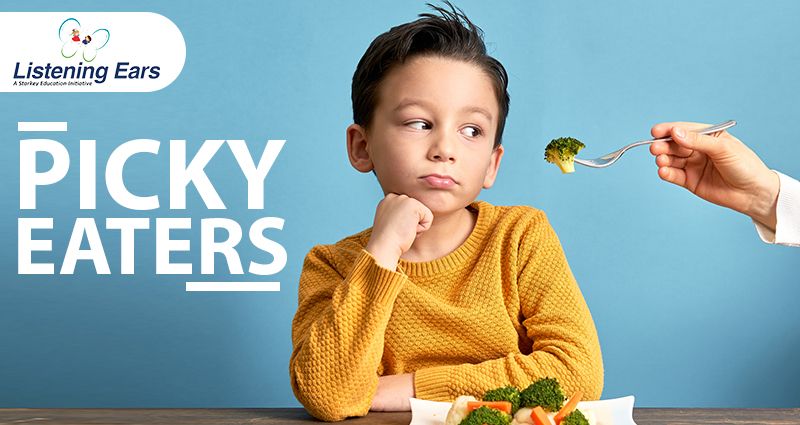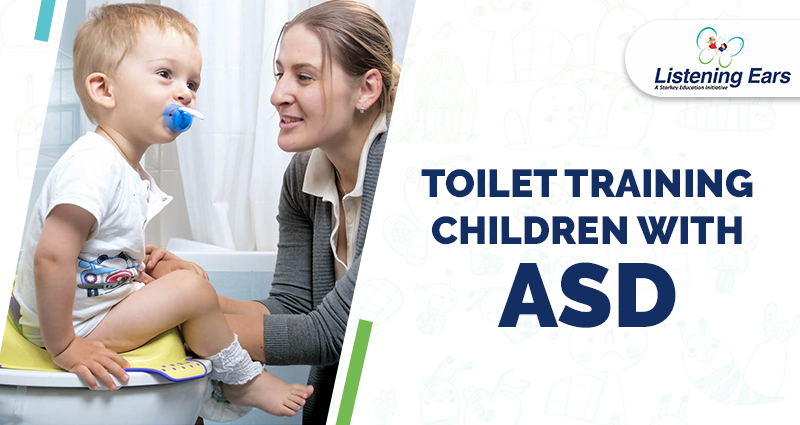Managing Your Child’s Diet Requires Patience and Understanding

Toilet Training Children With ASD
December 12, 2019
Global Developmental Delay (GDD) Affects the Intellectual and Communication Abilities of Children
January 24, 2020I wish I had a magic wand for this issue alone. Parents often commiserate about their kids eating habits or lack of! I have to confess it’s not down to one issue and there isn’t one solution. Complaints often relate to wanting their kiddo to take one bite, just one taste so they know the food is not going to be so horrific. Kids can have exceedingly limited diets, they can reject anything, refuse to try anything new or the explosive meltdowns at mealtime can make dinnertime an unpleasant and stressful time for all. I frequently encounter frustrated parents who are convinced they’ve tried it all and are accepting that their kid is constitutionally a fussy eater and a varied diet is simply not on the horizon. More so, I encounter helpless parents, parents so fed up and irritated at the fact their child is never going to eat more than 4/5 foods.
My first bit of advice and this truly goes for everything: every child is different. Every child demonstrates feelings and behaviors for different reasons. Yes some kids can experience the same underlying difficulties but what works for one may not work for another. It’s honestly a matter of trial and error, you can be lucky and the first strategy works but unfortunately it generally takes a few or a few combined. Kids can be fussy eaters for a variety of reasons such as sensory or behavioral disorders, autism spectrum disorders and medical frailties to mention a few! I generally take a gradual, personalized and flexible approach, and I encourage you to do so too.
The desired outcome at the end of any food program is not to get food into your kid at mealtime, but reach a point where your child eats because they are motivated to do so.
Why is my child a fussy eater?
Examples
- Your child may be over-sensitive to sensations in the mouth (oral defensiveness), may gag on strongly flavoured food, lumpy food or solid food.
- Some kids are over-sensitive to the smell of food and seek bland foods as a result.
- A child who seeks sensory input might prefer strong flavoured, crunchy, chewy and textured foods.
- A child with low muscle tone or poor oral motor control and coordination struggle to chew and swallow efficiently, and may therefore prefer food that does not need to be chewed.
- A child who has sensory-based motor disorder may struggle with the coordination skills needed to use cutlery efficiently and often avoids food that takes too much effort to eat.
(Please be aware the below tips are not specifically designed for your child. These are very general tips, it is recommended you see a feeding therapist/OT if concerned around your child’s eating habits)
Here I have included some strategies I recommend to parents:
1. Understand why your child is a picky eater
This is the first place to begin. Knowing why your kid is fussy with food is the first and often most important step to take. Knowing the issue is often beyond their control especially when they are young is often a breakthrough in this whole process. A child who is ‘sensory seeking’ seeks stimulation through food which gives them a strong, intense stimulation e.g. strongly flavored/crunchy foods. On the other hand, a child who is ‘over-responsive’ to sensations experiences sensation as frightening, this is unconscious and cannot be overridden when they are young.
2. NEVER force a child to touch, eat or taste a food
Forcing children to do anything with food they are uncomfortable with undermines the goal of helping children feel comfortable enough to touch, try or accept a new food by placing pressure on them and causing stressful mealtimes. If you are looking to raise a more varied eater and having stress and pressure-free mealtimes is essential. Resist the urge to bribe, force or cajole food into your child’s mouth. You decide what to serve and when, but its your child’s choice whether to eat it or not.
3. Achieving a healthy diet
At the end of the day that’s all we want, our kiddos to eat a healthy balanced diet.
Once you know WHY your kid is having food issues, it is important to take the steps to help them desensitize i.e. less sensitive to certain foods if they underlying problem is sensory-based, if not taking the right steps to work on fine or gross motor skills if it is a coordination problem.
- Make a list of what they do and don’t eat.
- What nutrients are lacking? Lack of protein, too much sugar?
- Can yo offer healthier choices to current foods? e.g. can you give a healthier brand of jam/peanut butter? Can you mix sugary cereal with a healthier cereal and so on.
- Can you change the way the food is presented? Instead of pizza could you give a homemade version with healthier bread and toppings? If your child is being fed by you, try finger foods, if your child does not like handling foods try cutlery.
4. Set guidelines and expectation for mealtime
Children often like routine and can become anxious when they don’t know what to expect. Mealtime is no different. Kids can worry there won’t be something they want to eat or maybe they will be forced to try undesirable food. A social story can work quite well prior to mealtime or even just explain to your kid ‘We are going to sit together at the table, if their is something on your plate you don’t like, you can put it on another plate, you can eat it if you wish, but you do not have to’.
5. Encourage your child to play with food, at times other than mealtimes
In order to achieve success at the dinner table, feeding therapy does not start at mealtime or at the dinner table. Feeding therapy normally starts with a range of play-based desensitization techniques that allow children to become comfortable with the smell, sight, texture and eventually taste of foods. Playing with foods encourages children to interact with new food with no pressure or expectation of eating the food. When children are happy to touch textures and play with foods they will often get more comfortable licking and overtime tasting the food.
6. Respect your child’s responses
- Don’t punish your child for being unable to eat something.
- If your child cannot eat soft food, then don’t force it. Seek help for the underlying reasons your child cannot tolerate particular foods.
- Keep healthy foods at the ready! You’d be surprised what a hungry child might tolerate.
- Try have one meal per week that your child enjoys, don’t make every meal hard work for both you and your child, have mealtimes when kids know they won’t be asked to try new foods.
- If your child does not want the food to touch, then use a compartment plate
7. One bite at a time
This is key when introducing one new food at a time, over a period time, never ask your child to eat a full plate of new food at a time. With younger kids, its best to just keep offering new foods without any pressure to eat it. Once your child is mature enough to reason with then you can start using incentives and introducing new food to ‘try’. Remember: it can take up to 16 times of trying a new food before a child is fully ready to accept to eat it.
8. Try incentives and transition gradually
- As the saying goes Rome was not built in a day and its unrealistic to think your child will start eating a variety of new foods in a matter of days.
- Begin by incorporating new foods by continuing to make small changes to preferred foods e.g. add a different sauce to pasta or a different pizza topping or cover healthy bread or a burger in tomato sauce and cheese.
- Offer the familiar when introducing the new. Offer preferred food with new food. If your kid loves chips and you would like them to eat tomato sauce add tomato sauce with the chips etc.
- Offer a healthy enjoyable snack at the end of the meal as an incentive to finish whats on the plate.
- Try and introduce new foods in a fun, preferred setting like the playground or park when your child is in a relaxed state.
9. Never trick children into eating something
Trust is the basis of a feeding relationship. Never blend or puree food as a means to trick your child into thinking they are eating something else. You are violating that trust, being open and honest is the best policy. The whole goal is to get your kid eating because they are motivated to do so.
Please be aware this process can be painstakingly slow and needs lost of patience and endurance but I promise every one of these steps are worth it in the end.
Remember just because a child doesn’t put food in their mouth does not mean progress has not been made. Exposure is key to success. Each additional encounter desensitizes a child that much more, and as comfort grows, so does willingness to try new foods.




